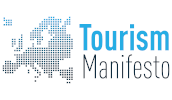Tom is a professionally qualified blue badge tourist guide who is based in London. He is a founder President of the Institute of Tourist Guiding, sat as an executive officer of The World Federation of Tourist Guide Associations (WFTGA) and is a past President of The Federation of Tourist Guide Associations (FEG). He has been a U.K. lead expert for the British Standards Institute (BSI) and was awarded an MBE by HM The Queen for services to tourism.
Why Definitions Matter... .... .... .... .. .. .. .. ......

DEFINITION OF A TOURIST GUIDE
2003 saw an important milestone in the establishment and recognition of the profession. In that year the European Standards body (CEN) agreed a new standard that defined tourism definitions. EN13809:2003 included the following definition of tourist guide:
Tourist guide:
“Person who guides visitors in the language of their choice and interprets the cultural and natural heritage of an area, which person normally possesses an area-specific qualification usually issued and/ or recognized by the appropriate authorities.”

This definition was the culmination years of discussion and built on groundwork carried out before CEN’s involvement. This particularly included an accord with the International Association of Tour Managers (IATM) which delineated the differences between that profession and the tourist guiding profession. The essence of the differences was carried through into EN13809 where both professions were defined as well as a further definition of Tour Escort.
The initial importance of the standard was that the definition had been agreed by the consensus of all the stakeholders present which included expert stakeholders from across tourism, not just from tourist guiding. The tourist guide representatives took part through national standards bodies who were involved which, for the UK was the British Standards Institute, as well as through The Federation of European Tourist Guide Associations (FEG) that were observers. The World Federation of Tourist Guide Associations (WFTGA) also ratified the definition. From the wider tourism industry specifically IATM and the European Tour Operators Association (ETOA) were present as observers and both agreed the definitions. EN13809 was consequently embraced in a number of national standards across Europe that mirrored the European Standard. With this milestone the term Tourist Guide had finally been recognised right across tourism and defined, among other things, as normally area specific and linked to people (visitors).
What was NOT defined in EN13809 was the label Tour Guide. The use of Tour Guide had long been problematical. Its generic nature had often been used as a catch all phrase to include several tourism professions making it unclear as to exactly which professional was meant. This lack of clarity created problems. It failed to appreciate the different but specific professions involved to the detriment of all of them, especially if it gave an impression that they were completely interchangeable. It could also be used to push down or dilute quality and standards for commercial gain. Separately use of the phrase could cause confusion for consumers who had no certain idea of what service they were getting or whether someone was indeed qualified to provide it. EN13809 could therefore be seen as a move by the tourism industry as a whole to provide much needed clarity (and transparency) by defining terms right across the industry to the benefit of those working in it and to consumers. Finally with the Standard those who buy tourism products and services would be fully aware of what they were buying.

Since 2003 the issues outlined in the last paragraph have decidedly not gone away. There have been challenging discussions with the EU particularly in relation to the area-specific nature of tourist guiding and provision of cross border services. By 2010 ETOA was active in using ‘tour guide’ to establish a pan-european ID card which perpetuated many of the problems listed above. They have also worked to see the EU introduce a different EU-wide tour guiding definition which yet again would include all professions and the services they provide in one generic phrase, ‘tour guide’. A paper for the APTG liaison Committee at the time pointed out that, ‘If such a definition was ever implemented – general and vague enough to cover all these persons – the consequence would without any doubt be that when a consumer buys a “guided” excursion he/she will not have any idea of the quality or minimum qualification of the person engaged to conduct the tour. This would be a serious step backwards at a time when quality and standards are the two keys aims throughout most of the industry.’
In contrast, in one sense building built on EN13809, in 2008 CEN completed the agreement on a European Standard for the Provision of Tourist Guide Training and Qualification Training Programmes. EN15565:2008 set out the area specific and European specific knowledge and practical skills needed in tourist guide training. The Standard has been used as a benchmark for training in a number of European countries, including recognition by The Institute of Tourist Guiding and Scottish Tourist Guide Association in the UK.
Periodically all European Standards are considered for review. Neither EN13809 or EN15565 have been revisited for review. Although there have been deliberate attempts to undermine the definition, Tourist Guide has endured as the clear, transparent and relevant definition of the profession.
Author: Tom Hooper, British Standards Institute UK expert
Note for information:
Richard Skinner and Tom Hooper were both British Standards Institute (BSI) UK experts and Tom was BSI UK lead expert for EN15565.Ingrid Wallenborg was instrumental in creating awareness of a number of issues involved as a member of FEG ExCo and Themis Halvantzi-Stringer as an APTG Co-Chair. My thanks to for their valuable input into this article. TH










